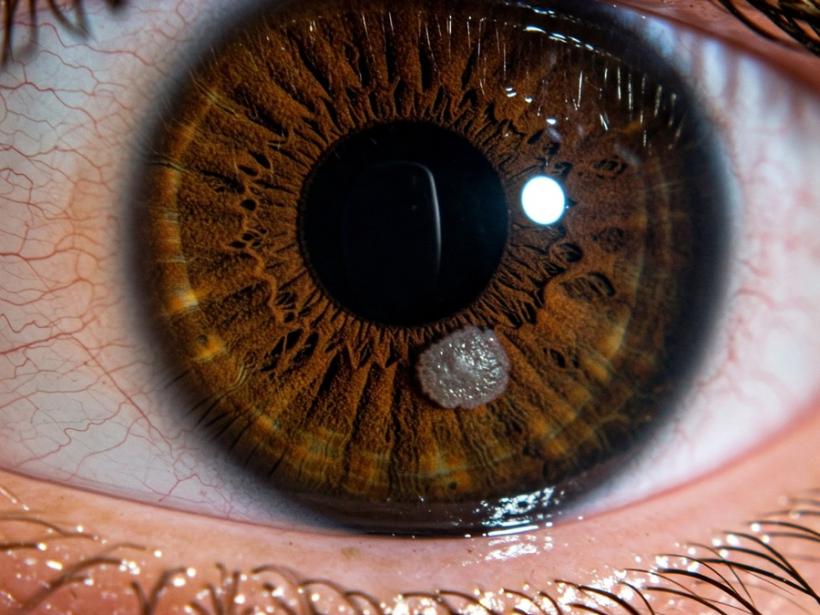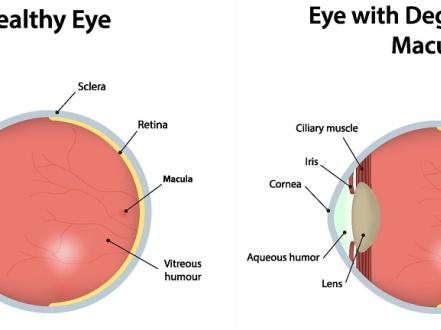When you look in the mirror and see an odd gray spot on the white of your eye, it can be shocking. Although some individuals do not experience any pain, others may be concerned about whether or not this is a sign of some other more serious eye health complication. It is important to note that the gray spot may sometimes be an innocent condition, but in other cases, it is an indication of a health issue that needs to be treated. It is important to understand the possible triggers, signals, and care schemes for this condition.
Let’s learn why a gray spot might happen, when you need to consult with a doctor, and how treatment can help so that your eyeball anatomy can remain healthy.
What Does a Gray Spot on the White of Your Eye Mean?
A gray spot on the white of your eye is typically found on the sclera, or the white part of the eye, and may be of various sizes, shapes, and colors. Depending on the cause, these spots may or may not affect your vision. Sometimes, they are a side effect of aging or the environment, and sometimes, they are an indication of a medical condition that will have to be addressed. Identifying the potential cause of gray spots and the occurrence of accompanying symptoms will assist in establishing if the spot is harmless or indicative of something more sinister.
Causes of a Gray Spot in the Eye
There are several causes of the development of a gray spot. Some of the more prevalent causes are explained below:
- Age-Related Changes. As a person ages, one can have small, benign-looking gray spots on the sclera. These are typically lipid or calcium deposits. This spot is more common in older people and does not usually threaten eye health.
- Pterygium. A pterygium, which is sometimes referred to as "surfer's eye," is an innocuous growth that appears on the sclera and advances onto the cornea. Prolonged exposure to UV light, wind, or dust causes a pterygium. A pterygium is not a serious medical condition but may create irritation, redness, and the formation of a gray spot on the white part of the eye.
- Pinguecula. A pinguecula is a common condition that causes an eye gray spot. Similar to a pterygium, a pinguecula is a yellowish or gray nodule that occurs on the sclera, typically as a result of environmental factors such as UV or irritants such as dust. It is a benign condition that generally does not create significant symptoms unless it becomes inflamed.
- Conjunctival Melanosis. Conjunctival melanosis is a condition characterized by the development of dark or gray spots on the sclera. The spots are pigment deposition and are more common in individuals with darker skin. While they are typically benign, in some cases, they may be associated with a rare form of melanoma.
- Cataract Types. At times, a gray mark can be associated with one of the cataract types, namely a cortical cataract. Cataracts are typically associated with the lens, but sometimes they appear in unusual ways that produce spots or changes in the sclera.
- Infections and Inflammatory Conditions. Inflammatory diseases and infections like keratitis or uveitis may also be the cause of a gray spot. These infections and inflammatory diseases lead to swelling, redness, and pain, and therefore are more dangerous, and medical treatment is needed.
Other Eye Symptoms That May Accompany a Gray Spot
Even though in a few instances people will only see an eye gray spot and no other symptom, in others they can have additional symptoms which suggest that perhaps there is something wrong. Observe the symptoms accompanying this one as they could be indicative of another thing:
- Eye Redness, Pain, and Swelling. If the grayish spot on your eye white is followed by eye redness, pain, or swelling, there might be an infection or inflammation. Uveitis (uveal inflammation) or conjunctivitis (pink eye) are some possible conditions that will lead to such symptoms, and they need treatment to prevent further complications.
- Sensitivity to Light. More light sensitivity, or photophobia, is yet another warning signal. Squinting or aversion to the light because it's painful is a sign that the eye may have something wrong with it, such as inflammation or infection. Photophobia should never be taken lightly, especially if it's seen in conjunction with a grayish spot on the white area of the eye.
- Vision Changes. If the spot on the eye occurs with changes in your vision, such as blur, double vision, or the inability to perceive objects at a specific distance, an urgent visit to the doctor is necessary. Vision disturbances may be a sign of cataracts or serious eye problems that need to be addressed by a professional.
Diagnosis and When to See an Eye Doctor
If you notice a gray spot on the white part of your eye, you should visit an eye doctor to determine the reason and deal with eye health concerns if necessary. The best doctors for eyes can perform several tests to determine what kind of spot it is and if it's a danger to your vision or the general well-being of your eyes.
Diagnostic Methods
Slit-Lamp Examination: Slit-lamp testing is one of the most common diagnostic examinations used to examine the detailed structure of the eye. The examination allows the eye doctor to see through the sclera and cornea, allowing them to identify why the gray spot exists.
Imaging: On other occasions, imaging tests like ultrasound or optical coherence tomography (OCT) may be required to view the internal eye structures more clearly. This is particularly helpful in the diagnosis of more complex conditions, including types of cataracts or retinal disease.
Biopsy: If the gray spot is believed to be caused by a more serious condition, such as a tumor or melanoma, a biopsy may be recommended to obtain a tissue sample for analysis.
Treatment Options for Gray Spots in the Eye
Although most episodes of a dark patch on the eye’s white area are harmless and do not need to be treated, others might need to be treated, particularly if they result from an infection, inflammation, or other conditions affecting the eye.
When Treatment Is Needed vs. When It's Harmless
In case the gray spot is a result of aging, mild pterygium, or pinguecula, treatment is usually not needed unless the spot is bothering you. These conditions are, although uncomfortable, typically benign and do not lead to any serious complications. If the gray spot is related to an underlying condition such as uveitis, cataract, or infection, more aggressive treatment might be indicated to prevent complications such as loss of vision or additional eye injury.
In other cases, especially if the gray spot is growing or causing a great deal of discomfort, medical help needs to be obtained. A good examination from an eye practitioner will determine if the spot is benign or should be treated.
Medical Treatments
Antibiotics
If the gray spot is caused by an infection, the underlying problem can be addressed with antibiotics. This is common with conditions like conjunctivitis or corneal ulcers.
Steroids
In cases of inflammation, steroids may be used to reduce swelling and improve symptoms. Steroid eye drops or oral medication can be used in the treatment of uveitis.
Surgery
In critical situations, such as where the gray spot is associated with tumors or cataracts, surgical intervention can be used to remove the infected tissue. For example, cataract surgery may be performed to remove cloudy lenses obstructing eyesight.
Cosmetic Issues and Laser Treatment
For aesthetic concerns, if the white spot is striking and bothersome, there's laser therapy as a choice. It comes into play in eliminating or reducing lesions like pingueculae or pterygia that incite visual disturbances.
Takeaway
A grayish spot on the white of the eye may have several reasons behind it, which can range from benign age changes to more sinister conditions that may need medical help. It is important to be vigilant about the health of your eyes and report any vision change, pain, or other worrisome signs to a specialist. With timely diagnosis and intervention, most disorders related to the presence of a gray spot on the white eyeball can be successfully treated.
If you're concerned about an area of gray on the white of your eye, don't delay in visiting the best eye doctors for a proper checkup. Maintaining regular eye exams and early treatment can prevent more advanced complications down the line. Through immediate professional attention, you can ensure your eyes are healthy and your vision is clear, preventing intermediate and distance vision issues.
In conclusion, even though most of the gray spots on the white of your eye are harmless and do not require treatment, it is prudent to be proactive in matters of eye health. Having knowledge of when treatment is pivotal will make you able to make informed decisions about your eye care. Always consult the professional opinion of expert ophthalmologists or ophthalmology associations for the latest information on how to deal efficiently with eye conditions.






